Before You Buy A Used Kayak Or Paddleboard, Read This
- By: Tony Acevedo
- on
- Found In: Fishing Tips, Kayak Fishing, Product Reviews, SUP Fishing
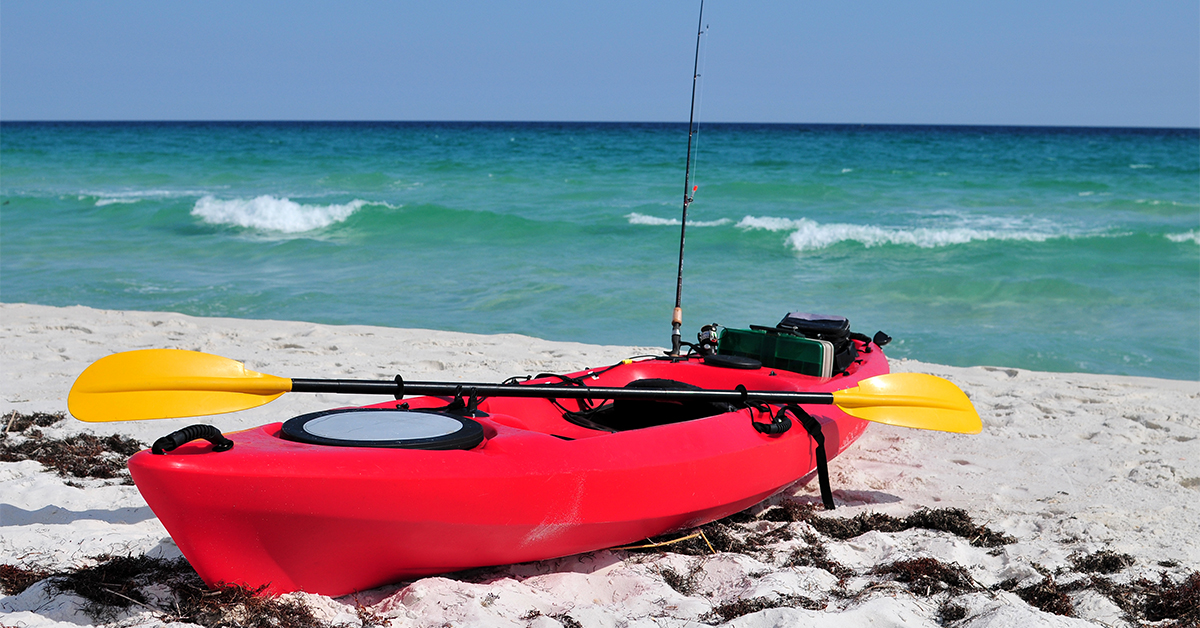
Are you looking to get a kayak or paddleboard?
New ones can cost up to $3,000, but you can often find great used ones that are in “like new” condition and cost much less.
However, there’s no Carfax for kayaks or paddleboards, so deciding whether it’s in good condition is up to you.
And to help you out with that, I’ve put together six tips for buying a used kayak or paddleboard.
Watch the video below and if you have any questions, ask me in the comments at the bottom of the page here.
Enjoy!
6 Tips For Buying A Used Paddle Craft [VIDEO]
Related videos:
- Kaku Kahuna Paddleboard Review [Top 3 Pros & Cons]
- Vibe Maverick 120 Paddleboard Review: Specs, Pros & Cons
- The Ultimate Guide To Buying A Fishing Kayak (Must Read Before Purchase)
- Jackson Coosa Flex Drive Kayak Review [Video]
Tip #1: Test The Kayak Or Board On The Water
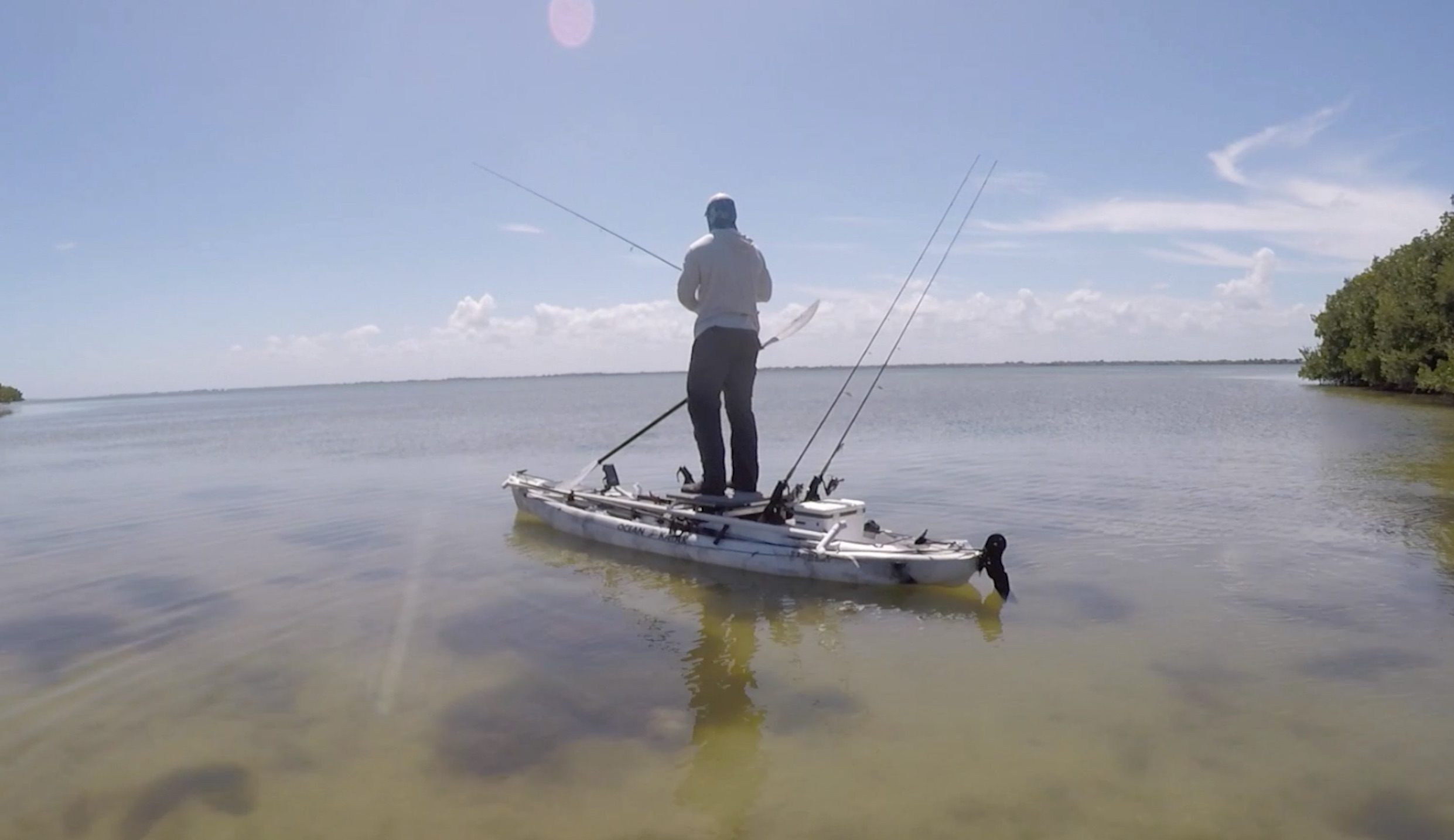
This is the best way to help you decide if it’s a good vessel for you.
Are you comfortable in it?
Does it ride well?
Can you lift and maneuver it on dry ground?
Also, you’ll get to see if there are any leaks.
Tip #2: Research The Kayak

How much does the kayak or paddleboard weigh?
Is it light enough for you to comfortably transport it over dry ground?
Remember, the kayak doesn’t get from the garage to the truck to the water by itself…
Also, what’s the weight capacity?
A good rule of thumb is to have a 100-pound buffer between the weight capacity and how much weight the board is actually supporting.
For instance, if you weigh 200 pounds, and you have 100 pounds of gear, that’s 300 pounds total.
In this case, you’d want a kayak or paddleboard with at least a 400-pound weight capacity.
If you overload a board it can be dangerous because it can cause you to sit low in the water and be unstable.
Tip #3: Check The Hull
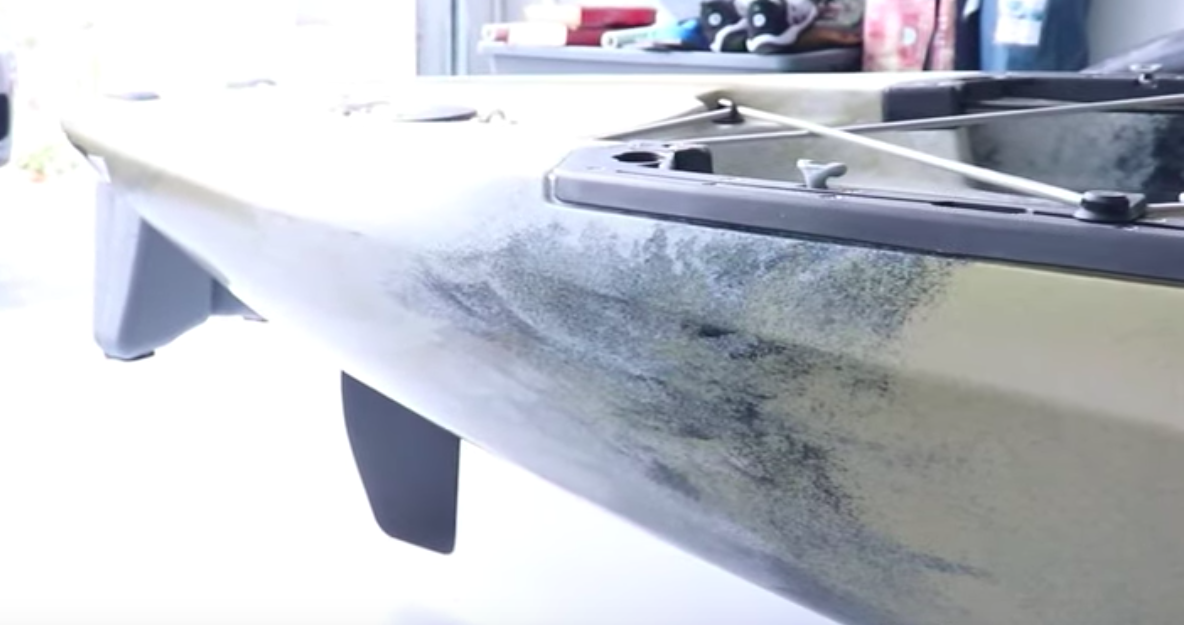
When you go to look at the kayak or paddleboard, check the hull.
Here’s what you want to look at:
- Check the bottom and make sure there aren’t any deep gouges that could turn into leaks.
- Check the front and back of the kayak on the bottom. This is typically where most wear and tear will be, caused by dragging it around. Make sure the hull is not worn away from too much dragging.
- Check for any cracks or dents (which can lead to cracks).
- Look for discoloration. Discoloration can be a sign it was left out in the sun, which can cause the plastic to become brittle and crack.
Tip #4: Check The Scupper Holes
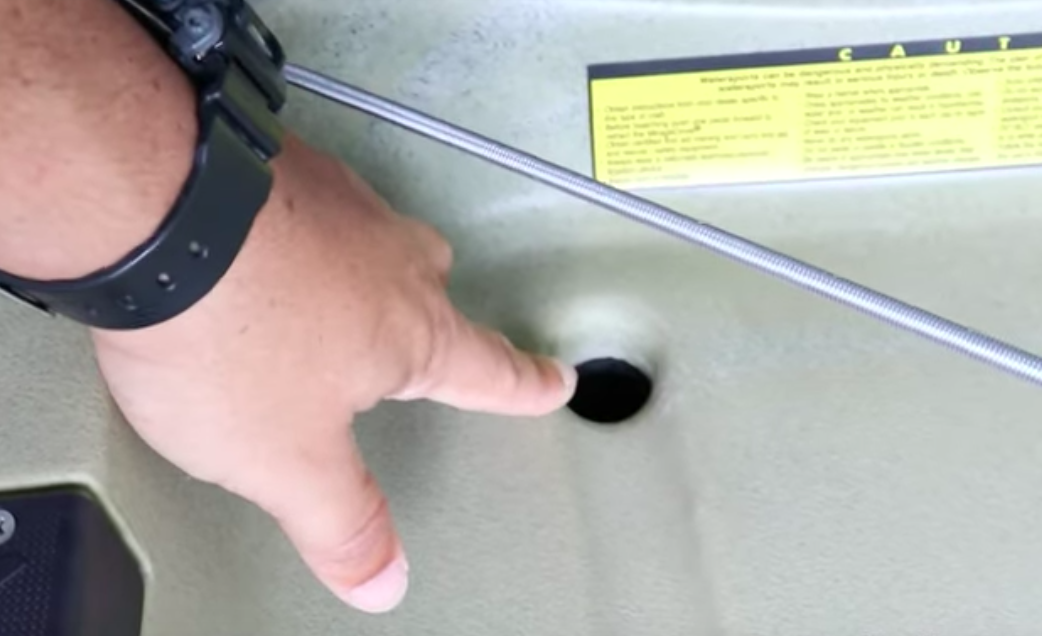
Check to see if there are any cracks around the scupper holes on the top or bottom of the board.
These are infamous areas where cracks and leaks can occur.
Also, carts that go up into scupper holes to transport kayaks are actually bad for them because they put a lot of pressure on the scupper holes, which can cause cracks or leaks.
So definitely make sure to check out the scupper holes.
Tip #5: Check Out The High-Pressure Areas

These areas include where you sit or stand, and areas where you would put a cooler or tackle box.
Over time, these areas may become weak and crack, so make sure there are no cracks in the kayak or paddleboard there.
Tip #6: Check The Hatches
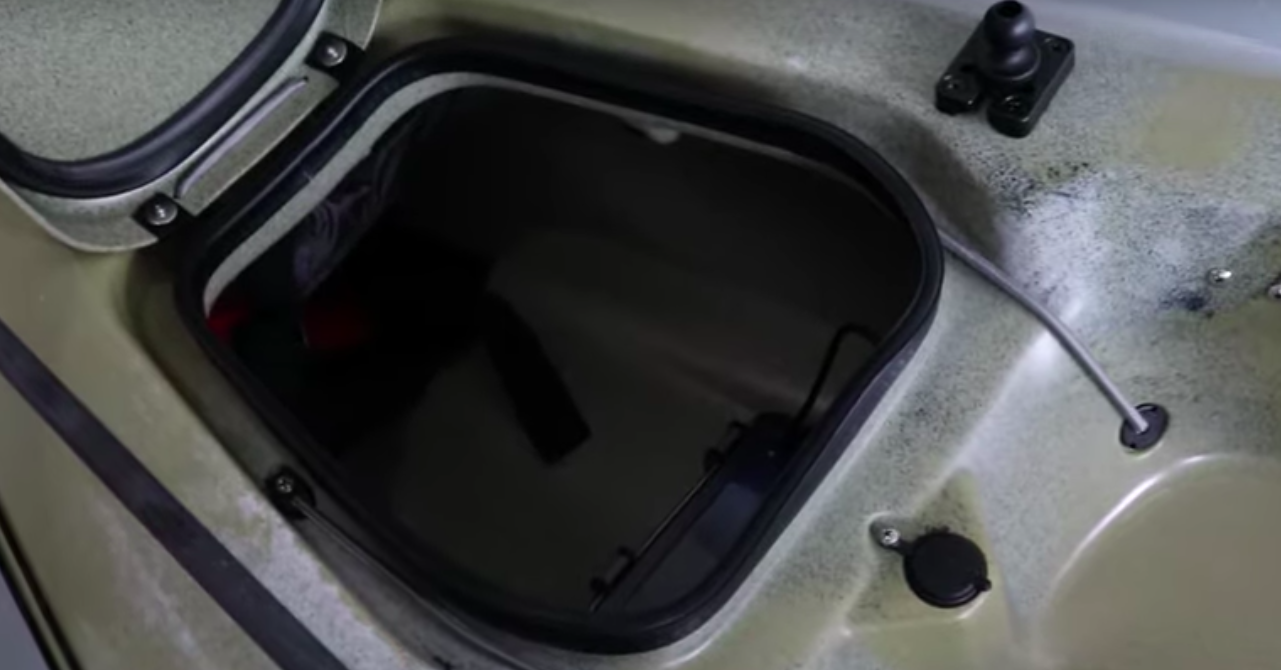
Any place that leads to the inside of a kayak can potentially be a problem, so make sure to check any hatches.
Make sure the hatches aren’t loose, make sure the hardware that holds them on isn’t rusted or worn out, and make sure the seals are in good shape.
You want to make sure that the seals are soft.
If they’re stiff and corroded, they may need to be replaced.
Conclusion
If you’re looking to get a kayak or paddleboard, consider getting a used one.
People often buy them, find out they never use them, and then sell their barely used boards at a lower price than they bought them for.
And to make sure you’re getting a good kayak or paddleboard, do these 6 things:
- Take the kayak or paddleboard for a test drive on the water
- Research the kayak and it’s specifications to make sure it’s a good fit for you
- Check the hull for dents, scratches, cracks, and discoloration
- Check the scupper holes for cracks
- Check out the high-pressure areas, like the standing and seating areas, and cooler storage areas
- Check the hatches and make sure they’re in good shape
Have any questions about how to choose a used kayak or paddleboard?
Let me know in the comments below!
And if you know someone who’s in the market for a kayak or paddleboard, TAG or SHARE this with them!
P.S. Want to get in-depth product reviews and the best fishing spots in your area? Join our Insider Club.
Do You Want To Quickly Find New Fishing Spots In Your Area?
Then you’ve got to see this private fishing club!
Here’s what you’ll receive today:
- Weekly fishing reports and TRENDS revealing where the inshore fish are feeding all year long
- Weekly “spot dissection” videos that walk you through all the best spots in certain areas
- Exclusive fishing tips from the PROS you can’t find anywhere else
- Everything you need to start catching fish more consistently (regardless if you fish out of a boat, kayak, or land).
Click here to join today.
Related articles:
Related categories:
STOP WASTING TIME ON THE WATER!
Do what the “SMART ANGLERS” are doing and join the Insider Club.
Here’s what you’ll receive today when you join:
- Weekly fishing reports and TRENDS revealing exactly where you should fish every trip
- Weekly “spot dissection” videos that walk you through all the best spots in your area
- Exclusive fishing tips from the PROS you can’t find anywhere else
- Everything you need to start catching fish more consistently (regardless if you fish out of a boat, kayak, or land).










Is it advisable to avoid purchasing a used kayak with a crack in the hull
Definitely avoid cracked kayaks. They can be repaired, however the repair will not last very long due to how much flex plastic has. the more and more it flexes, the weaker the repair will get.
Hey Tony, Is there any place I can list my 2013 12′ Hobie Angler for sale?
I typically use Facebook Marketplace, Offer Up, or LetGo when selling items. Unfortunately we don’t allow any selling on our site or pages.
This is great stuff. I’m looking at yams but I’m like to do my research first. It will probably be another few months before i buy. I do have a couple more questions. When buying used is there a depreciation like a car as there is no kbb for kayaks? Now I can’t remember my other question but I’m sure I’ll remember later. Thank you for all the info it is very much appreciated.
Hey Bryan! I’m not sure about specifics on value, but I know a lot of big name stores will not refund on kayaks once they leave the store. As soon as a kayak is put in the water I feel like the value instantly goes down. From there, it comes down to how much wear and tear the kayak as (how much it has been taken care of) etc. People definitely over price them when re-selling. I have seen some where you can just about get a brand new one for almost the same price. If I see any rust on the hardware, scratches on the bottom I start talking them down.
Nice article, Tony…..I get questions from guys in my club all the time inquiring about used yaks. This will be a great reference for them.
Thanks Gary! I’ve been seeing quite a few questions about the topic.
very good tip for both used and new yaks. tip #4 and #5 are big musts and why mine sits in the back yard. i used the wheels that went into the supper holes and i was told later that is why one or both scupper holes leaked. do not take a chance so don’t use them. my crack is inside the hole so it can’t be seen or fixed. i had no idea it had happened. it is sit on top so i did not realize it was filling with water and yes i had exceeded the recommended weight limit. tip 6 is the biggie. there should be no water when you look in there except on a real ruff day and then it may be seals. but on clam day where no water came over the top there should be no water in the bottom. this– it’s only a little water don’t cut it as one day it may turn into a big leak and if your in deep water can be a real bad thing..always wear a vest. . as stated in tip 2 the lower it sits in the water the less stable it becomes so as it filled with water due to crack it will start showing signs of being unstable and from there it goes under quick.
Thank you for the great feedback Roy! Those pesky scupper holes…..many people notice water coming in and can’t find the source, and like you said it can be tough to find especially if it’s down in the hole. A good way to test is to plug the bottom and fill with water.
Tony, what’s your opinion on the stealthiness of a kayak vs a paddleboard. Do you catch more or bigger fish consistently on a paddleboard?
Hey Dave!
I haven’t noticed much of a difference as far as fish catching, but the paddleboard tends to have more hull slap than a kayak. The paddleboard, however, is much easier to maneuver if you have to turn quickly to follow a fish. I have caught more fish in that sense because I have to make more noise and push more water to maneuver the kayak quickly if chasing down fish.